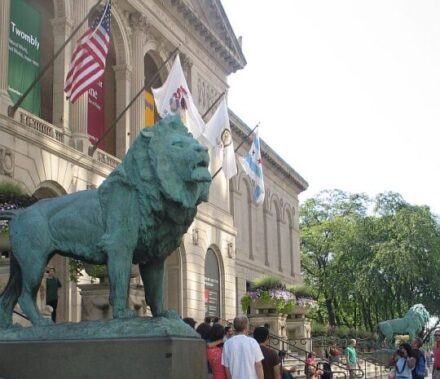
If you visit the Art Institute of Chicago do you go to a favorite artist’s gallery or a favorite painting? For lots of visitors it is Georges Seurat’s 1884″A Sunday On La Grande Jatte.” Stephen Sondheim even wrote a musical about it called “Sunday in the Park With George.”
Since the Art Institute has temporarily shut its doors to physical visits it has started the Essentials Tour Series so you can visit some of its works online in videos with the museum’s curators. Seurat’s famous painting is among them.
When looking at each of the three examples mentioned here consider the use of movement or its lack, colors and what stories are told. Archibold John Motley, Jr. whose “Nightlife” is in the series has said that a painting should tell a story. So what stories do you see?
Delve into the painting and Seurat’s pointillism style with Gloria Groom, curator and chair of European Painting and Sculpture. Close up, you see dots of color. Further back the dots form figures. The painting broke new ground in the use of complementary colors. The work has also generated stories about the figures depicted.
Move from the camera-shot style poses of Seurat’s painting to the action-packed, jazzy movements in Archibald John Motley Jr.’s 1943 “Nightlife.” It depicts a Bronzeville jazz club on Chicago’s South Side. So much is going on that it would be easy to miss the liquid spilling from a harried waiter’s tray. As with Seurat’s paintings you would likely recognize Motley’s style if you saw his other works without being told the artist’s name. In this video, former AIC Curator of American Art Judith Barter goes talks about the subject and the colors used.
When seeing the “Nightlife” video you learn from Barter that Motley may have been inspired to do a night scene after viewing Edward Hopper’s intriguing “Nighthawks.” However, Hopper’s late night scenario appears miles apart from Motley’s Chicago jazz scene unless it is considered as what might be going on in diners somewhere in the country. In this case, it’s possibly in Philadelphia give the Phillie cigar sign above the diner. Here, the viewer is outside the scene looking in. Barter discusses the color choices and the lack of a noticeable entryway.
Jodie Jacobs
